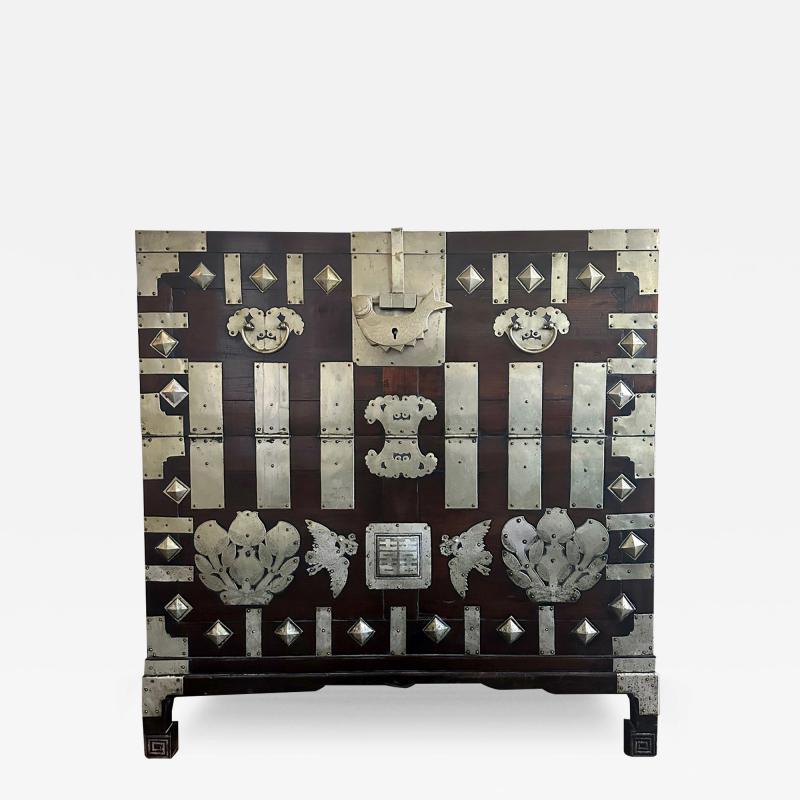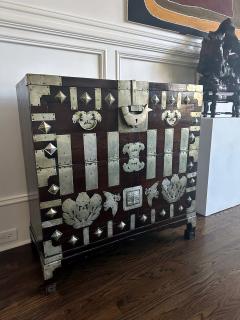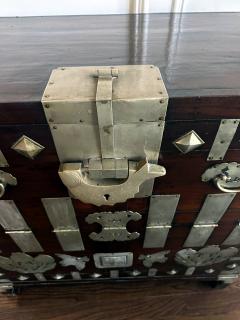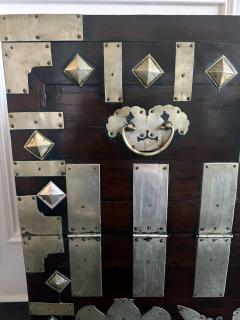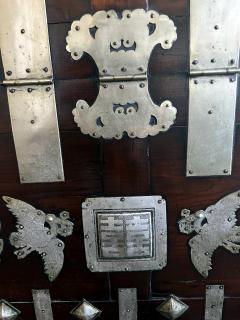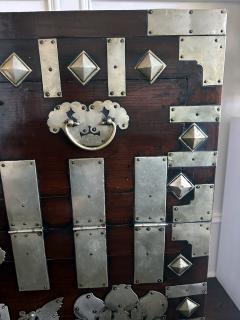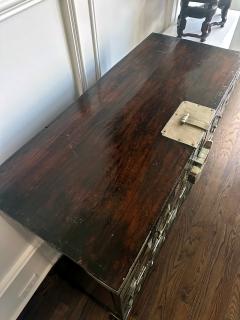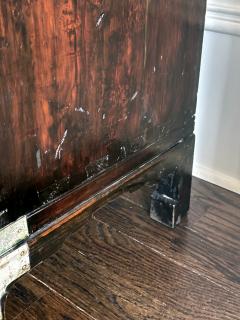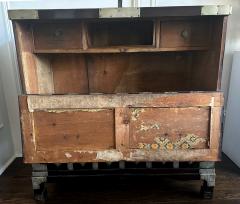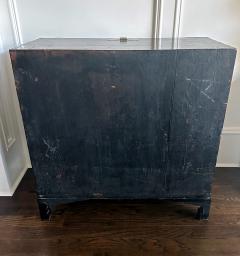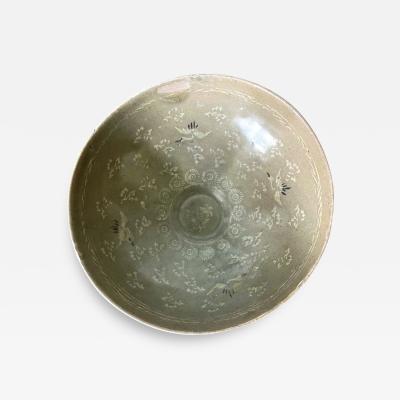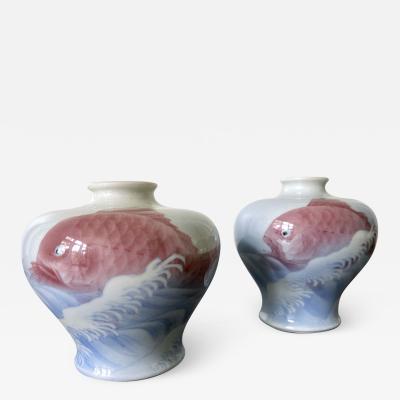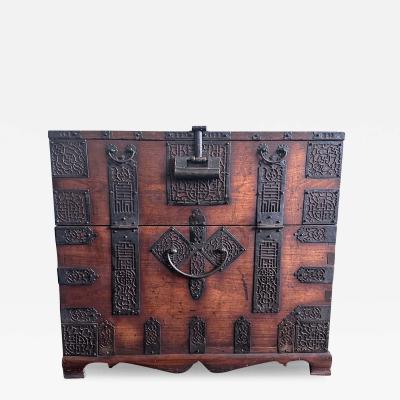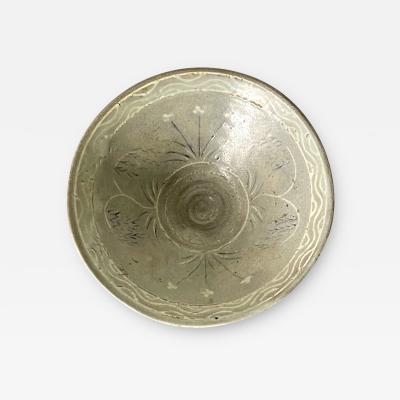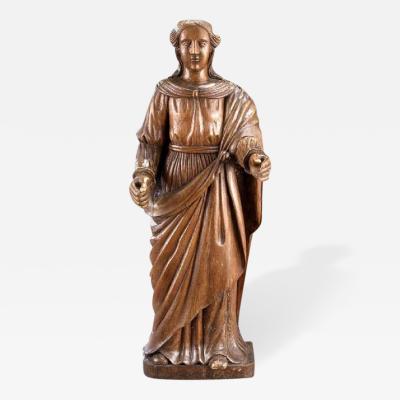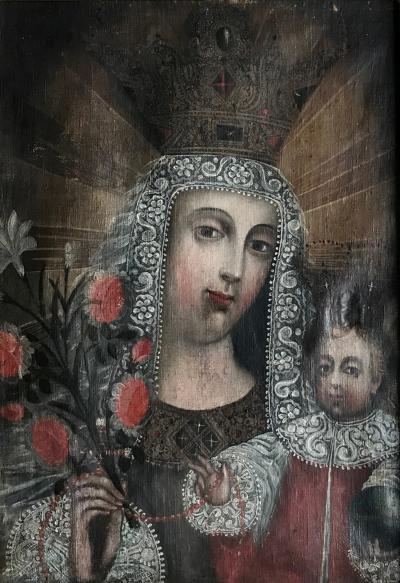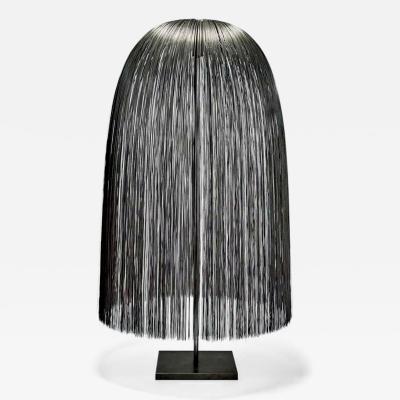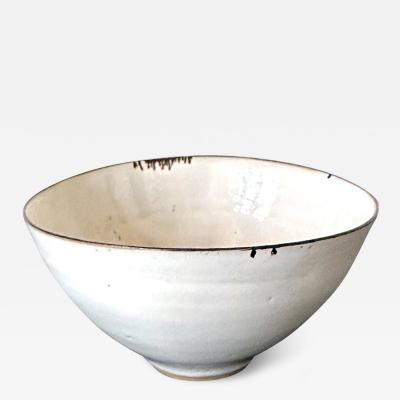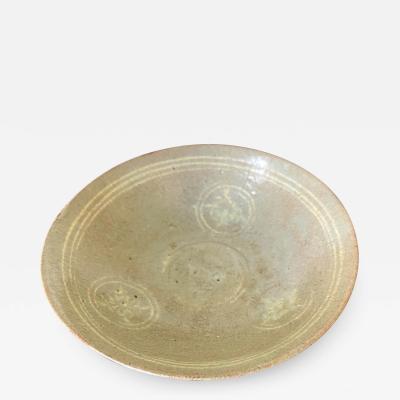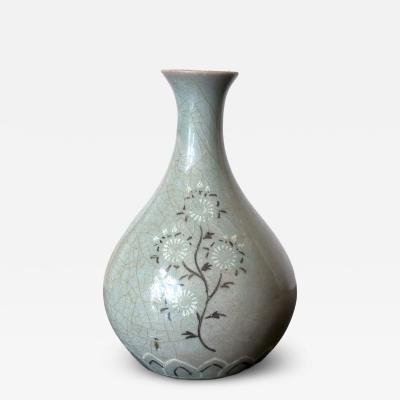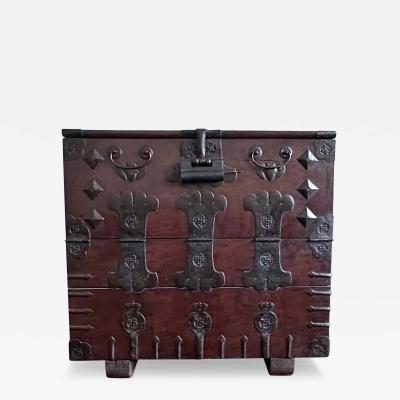Antique Korean Wedding Bandaji Chest Joseon Dynasty
-
Description
A striking Korean Bandaji with lots of original patina circa 19th century of late Joseon Dynasty. Bandaji is known as drop front half-opening chest that was used to store family valuables and beddings. The Bandaji on offer was made in Pyongyang area in now North Korea and was clearly intended as a wedding chest. Constructed in limewood (also known as Lindenwood), which is rather plain and lacks grains, the chest was instead sumptuously decorated with nickel-copper (Paktong or white copper) plates, stripes and studs. Covering nearly the entire front of the cabinet, the metal plates were placed with eye-pleasing symmetry pattern. The top row is centered with a large square lock plate with latch and a heavy fish lock (no key), flanked by a pair of pulls set on plates in longevity mushroom pattern (lingzi). The middle row has a large cloud-form hinge in the center, flanked by three vertical pairs of rectangular hinges. The lower row features a large embossed and chased square plate with a character "Double happiness" in the center, a Hanja character reserved for the wedding ceremony. On both sides, large pair plates of magpie, a symbol of happiness, and peach fruits, symbol of longevity were placed in symetrical pattern. The front door drops to reveal a row of three small drawers with pulls and a large storage space used for beddings and blankets traditionally (the middle drawer is now missing). The chest is supported by a base with conforming decorative metal plates and hoof feet carved with archaic key pattern. The interior retains remnant rice paper lining as shown.
Examining the piece, it is evident that it is in its original form. It shows tremendous patina incurred in its long life. It was probably taken from North to South Korean before it travelled with the owner to America. It is an antique piece with enhanced by time and with lots of characters, and in our opinion, that is where the beauty truly lies. It presents with a strong sense of history. A piece that tells stories.
Among the collection of the Korean furniture, the largest in the world, in Weisman Art Museum at the University of Minnesota in Minneapolis, Minnesota, there is a nearly identical Bandaji (shown in the last picture; item no.1987.22.47).
The same chest is also illustrated on plate 32 on page 52 in the book "Traditional Korean Furniture" by Edward Reynolds Wright and Man Sill Pai. -
More Information
Origin: South Korea Period: 19th Century Materials: wood and copper Condition: Fair. Extensive patina includes but not limited to old nicks, bumps, scratches, finish wear, scattered verdant oxidation and discoloration on the metal and dark accumulation around, bump on the double happiness boss, missing key and a middle inner drawer. Creation Date: late 19th century Styles / Movements: Asian, Traditional Incollect Reference #: 695048 -
Dimensions
W. 40.5 in; H. 40 in; D. 17.5 in; W. 102.87 cm; H. 101.6 cm; D. 44.45 cm;
Message from Seller:
Tishu, based in Atlanta, GA, offers a diverse collection ranging from Neolithic art to 20th-century collectibles, with a focus on Mid-century design, Japanese and Korean art, Asian textiles, and Contemporary Aboriginal art. Driven by a passion for timeless beauty, the gallery is open by appointment only and offers works that span 5,000 years of history. Reach them at 305-400-0561 or tishu@tishugallery.com.















